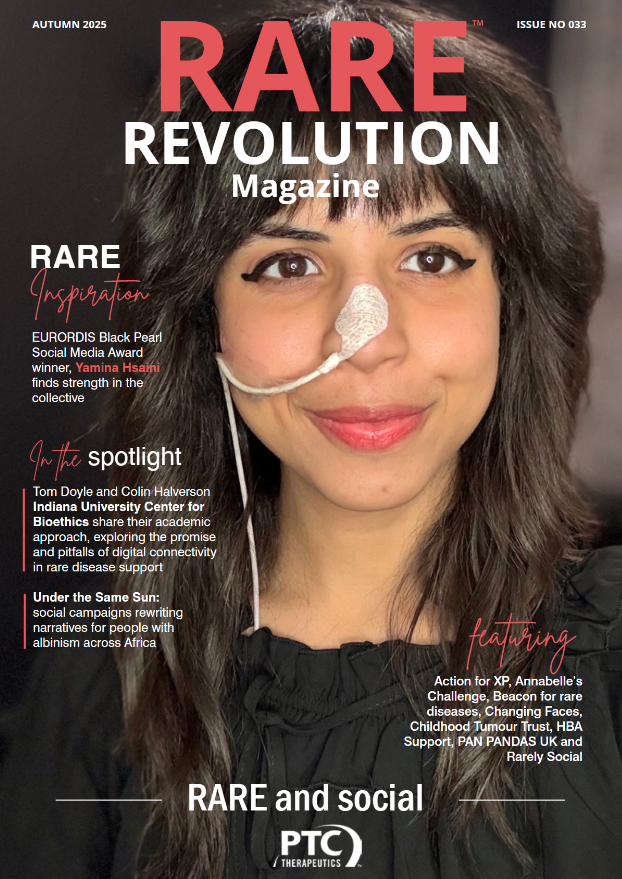Three ways AI is changing paediatric genomic medicine

Written by Will Greene, board member, Foundation for Prader-Willi Research, and a caregiver for a child with Prader-Willi syndrome.

In early 2023, a year after my son was diagnosed with Prader-Willi syndrome (PWS), I began experimenting with newly emerging artificial intelligence (AI) tools to support our family’s care journey. They showed promise but offered little practical help at the time.
That changed dramatically last year, when large language models (LLMs) and other AI services became significantly more powerful. I now use them regularly as a caregiver, advocate and researcher in the rare disease space.
Going forward, virtually every stakeholder in paediatric genomic medicine will need to grapple with these tools. AI is already becoming embedded into the way we diagnose, treat, and support children with rare genetic diseases. Its influence will only deepen in the years ahead.
In this piece, I’ll explore three ways AI is reshaping paediatric genomic medicine: by empowering families, accelerating diagnosis, and helping researchers unlock new discoveries.
Empowering patients and caregivers
One of the most immediate and personal applications of AI is helping families navigate the care journey. Had today’s tools been available back then, I would have leaned on them constantly—from the neonatal intensive care unit to the genetics clinic and beyond.
In our son’s first week of life, for example, my wife and I struggled with what kind of genetic testing to pursue, and when. An AI assistant might have helped us compare turnaround times, costs, and likely yield from different types of tests, including the expensive whole genome sequencing test that we ordered but later cancelled due to concerns about cost and practical utility.
Some caregivers have already used AI tools to extraordinary effect. Just recently, I came across the story of a marketing manager at Google whose son was diagnosed with Alexander disease, a rare and fatal neurodegenerative condition. Using AI, he catalysed new research in a field that, until recently, had been sustained by only a handful of dedicated researchers.
AI is not without its risks. It can generate false or misleading information, and it raises valid concerns around privacy and data security. The key, in my opinion, is to use it mindfully and cautiously, treating its outputs with the same critical lens as any other information you encounter on the internet.
Streamlining the diagnostic journey with AI
For many rare disease patients and caregivers, the diagnostic journey is long, expensive, and emotionally taxing. While some conditions can be diagnosed quickly, it’s not uncommon for families to spend years searching for answers, even for those with access to cutting-edge genomic tools and leading medical centres.
Fortunately, AI is beginning to transform the diagnostic landscape in paediatric genomic medicine, where early and accurate diagnosis can dramatically alter the course of care by enabling access to targeted therapies, clinical trials, and supportive communities. New models can now analyse vast amounts of clinical and genetic data to detect patterns that traditional methods might miss.
At the recent Frontiers in Paediatric Genomic Medicine conference, hosted by Rady Children’s Institute for Genomic Medicine (RCIGM) in San Diego, several promising applications were presented. One researcher described using AI to mine electronic medical records and identify patients likely to have undiagnosed rare conditions, including some of whom had spent years navigating the system without answers.

Others highlighted AI’s potential role in other areas of paediatric genomic medicine, such as the rapid diagnostic sequencing technologies and genomic newborn screening initiatives being developed at RCIGM. Dr Stephen Kingsmore, CEO of RCIGM, acknowledged the promise of AI in these areas but also highlighted numerous practical barriers to adoption, notably reliability of AI-driven results and the complexities of integrating these tools into clinical and public health workflows.
Accelerating discovery and research collaboration
AI is not just helping families and clinicians—it’s also accelerating discovery for researchers working to understand and treat rare genetic diseases. This is especially important in paediatric genomic medicine, where sample sizes are often small, data is fragmented, and research funding is often limited.
At the Foundation for Prader-Willi Research (FPWR), where I serve on the board, we’ve funded several studies that leverage AI for PWS research. A 2024 project led by Dr Rohit Singh at Duke University is one example. It uses LLMs to explore the molecular architecture of PWS, with the goal of illuminating the complex pathways disrupted in this multi-gene chromosomal disorder and identifying new targets for therapeutic intervention.
On the flip side, I’ve also seen AI-related grant proposals that FPWR chose not to fund because they didn’t address the most relevant needs of the PWS community. Even as AI becomes more powerful, human judgment remains essential to ensure these tools are directed toward meaningful goals.
Beyond the FPWR community, AI is being applied in a growing number of research domains. At the Frontiers conference, several presentations focused on its role in accelerating drug discovery, from multi-modal data integration to AI-guided compound screening. These tools are helping researchers filter vast datasets and prioritise promising leads faster than ever before.
From possibility to practice
Right now, AI is shifting from a promising concept to a practical tool that is already reshaping paediatric genomic medicine. Families are using it to navigate care, clinicians are leveraging it to shorten diagnostic timelines, and researchers are applying it to advance discovery in ways that would have been unimaginable just a few years ago.
As we look ahead, one high-level shift is already underway: AI is beginning to blur the lines between roles. Caregivers are becoming research collaborators. Patients are becoming co-navigators. Scientists are becoming architects of the tools and platforms that drive discovery.
If we get this right, AI won’t just improve paediatric genomic medicine—it will help redefine who participates in it, and whose voices shape its future.
Will Greene is a member of the board at the Foundation for Prader-Willi Research and a caregiver for a child with Prader-Willi syndrome. Follow him on LinkedIn for insights on rare disease research, advocacy, and innovation.
To learn more about the Foundation for Prader-Willi Research please visit: fpwr.org and follow them on social media



